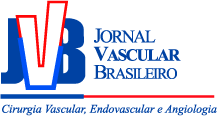Neovascularization of saphenous veins
Wolfgang Mouton; Dominik Heim; Jan Janzen
Neovascularization has been defined as the presence of reflux in a previously ligated sapheno-femoral or sapheno-poplital junction caused by the development of incompetent tortuous veins linked to the thigh or calf varicosities.
Langenbeck already described in 1861 what we would now define as neovascularization
The term neovacularization was first determined in 1987 by Glass as “recurrence through growth of new vessels”.
Histopathology showed that after 6 weeks new venous vessels and after 18 weeks parallel new venous vessels were present and after 40 weeks there was a continuity of venous flow.
With this he could demonstrate by histopathology that very thin-walled irregular new venous vessels did reconnect the previously transected ends of the great saphenous vein.
Neovascularization may represent a physiological healing process following venous surgery. Venous disconnection and altered venous hemodynamics may initiate neovascularization.
Histological examination of the operative specimen helps to distinguish between different morphological subtypes of neovascularization and “normal” remnants of venous vessels. Morphologically, various patterns exist such as typical neovascularization (
It is recommended to treat symptomatic recurrent varicose veins if indicated, by endovenous thermal ablation, ultrasound guided foam sclerotherapy or phlebectomies.
References
Wittens C, Davies AH, Bækgaard N, et al. Editor’s choice - management of chronic venous disease: clinical practice guidelines of the European Society for Vascular Surgery (ESVS). Eur J Vasc Endovasc Surg. 2015;49(6):678-737. http://dx.doi.org/10.1016/j.ejvs.2015.02.007. PMid:25920631.
von Langenbeck B. Beiträge zur chirurgischen Pathologie der Venen. Arch Klin Chir. 1861;1:1-80.
Glass GM. Neovascularization in restoration of continuity of the rat femoral vein following surgical interruption. Phlebology. 1987;2(1):1-6. http://dx.doi.org/10.1177/026835558700200106.
Glass GM. Neovascularization in recurrence of the varicose great saphenous vein following transection. Phlebology. 1987;2(2):81-91. http://dx.doi.org/10.1177/026835558700200205.
Nyamekye I, Shephard NA, Davies B, Heather BP, Earnshaw JJ. Clinicopathological evidence that neovascularisation is a cause of recurrent varicose veins. Eur J Vasc Endovasc Surg. 1998;15(5):412-5. http://dx.doi.org/10.1016/S1078-5884(98)80202-5. PMid:9633496.

